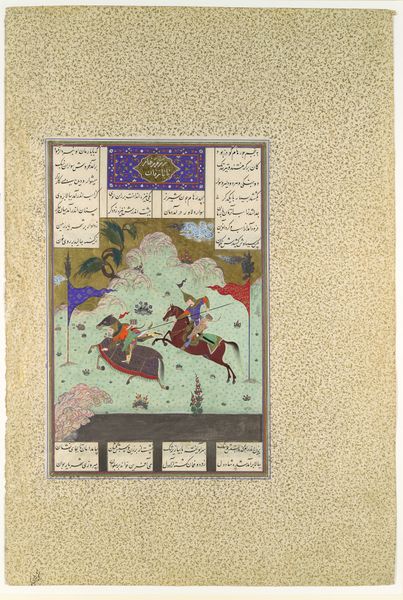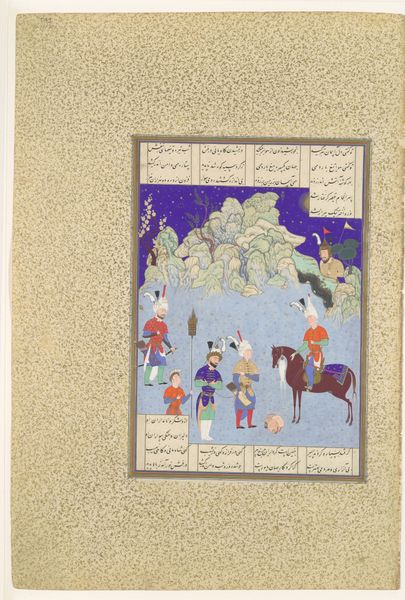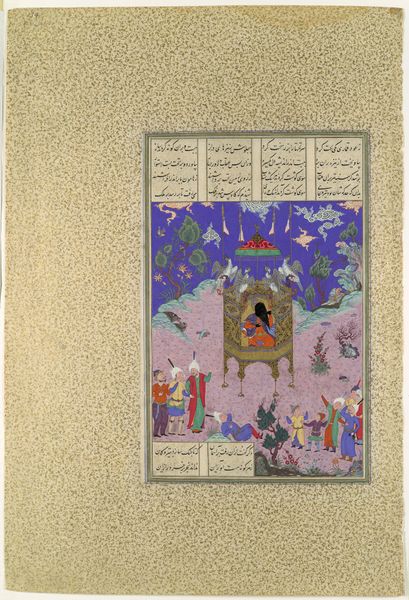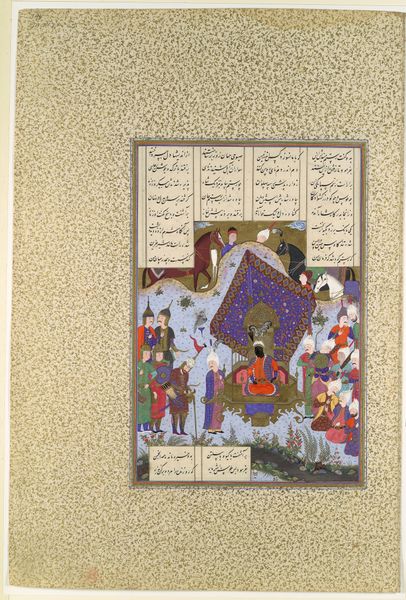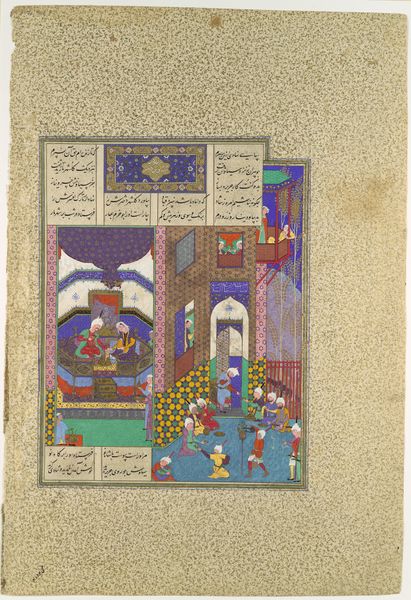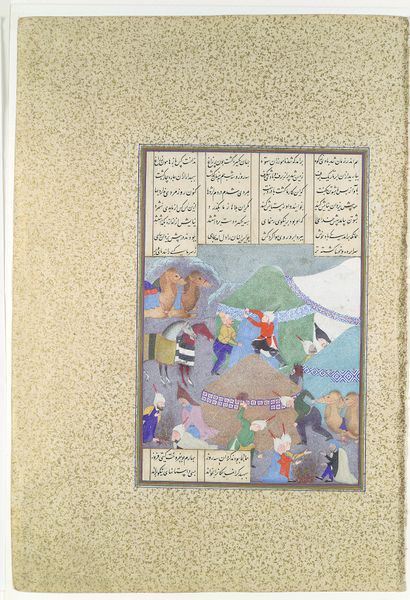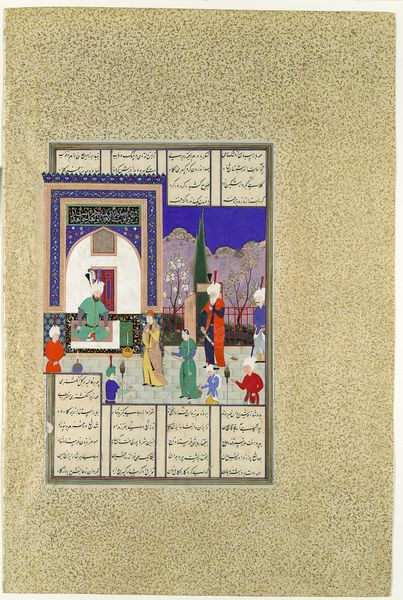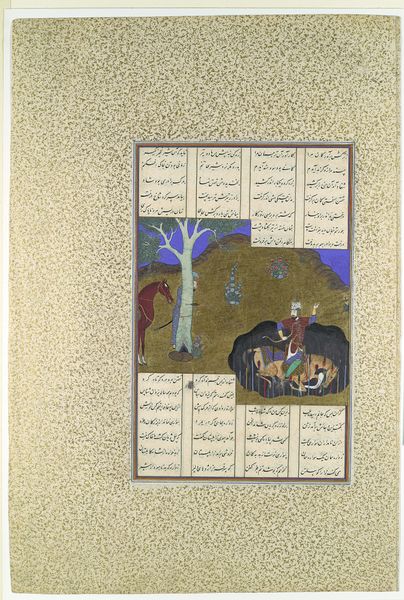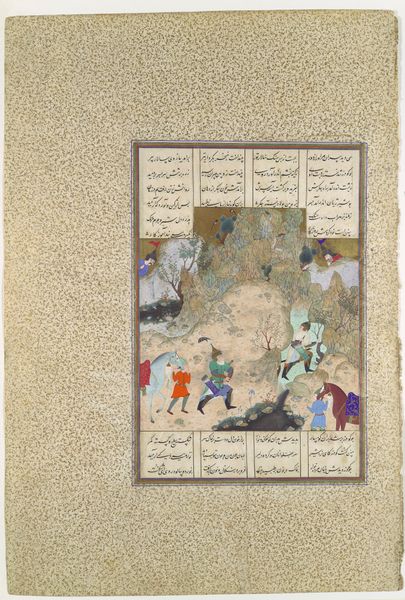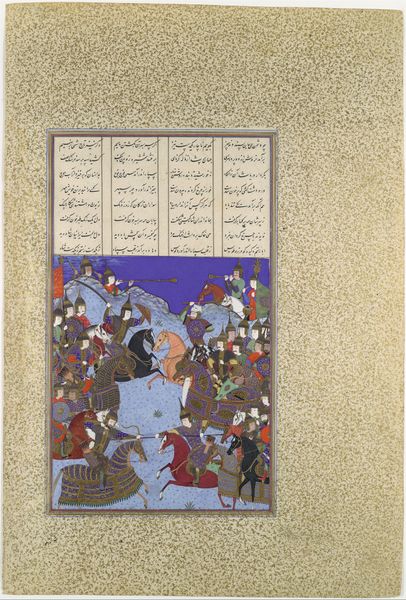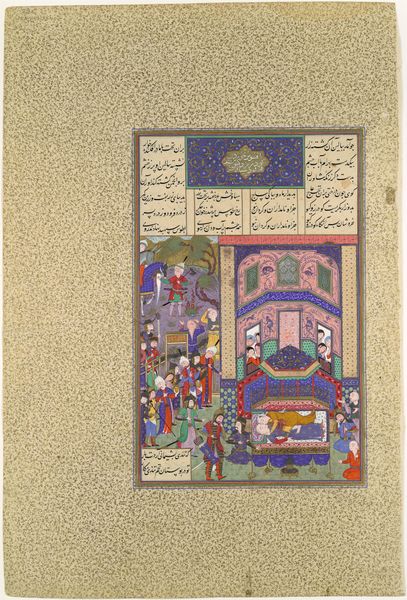
"Siyavush Recounts His Nightmare to Farangis", Folio 195r from the Shahnama (Book of Kings) of Shah Tahmasp 1500 - 1555
0:00
0:00
painting, paper, ink, mural
#
portrait
#
water colours
#
narrative-art
#
painting
#
paper
#
ink
#
orientalism
#
men
#
islamic-art
#
watercolour illustration
#
mural
#
miniature
Dimensions: Painting: H. 11 1/16 in. (28.1 cm) W. 7 5/16 in. (18.6 cm) Page: H. 18 5/8 in. (47.3 cm) W. 12 11/16 in. (32.2 cm) Mat: H. 22 in. (55.9 cm) W. 16 in. (40.6 cm)
Copyright: Public Domain
Editor: Here we have "Siyavush Recounts His Nightmare to Farangis," a folio from the Shahnama of Shah Tahmasp, made between 1500 and 1555. It’s done with ink and watercolor on paper and it's just brimming with detail. The vibrant colors and meticulous depiction of the figures and architecture give it a dreamlike quality. What historical and cultural lenses can we use to interpret this work? Curator: This piece exists at the intersection of royal patronage and Persian national identity. The Shahnama, or Book of Kings, was a crucial text in shaping that identity, especially within the Safavid dynasty. Shah Tahmasp's lavishly illustrated manuscript served as both a historical record and a political statement. The meticulous detail you noted reflects not only artistic skill but also the power and wealth concentrated at the court. The political authority benefited greatly from a specific reading and visual construction of their place within Iranian history. Consider also the implications of depicting Siyavush, a legendary prince, in such intimate detail. What does this choice say about the public's perception, and the court's intentional shaping of it, of rulers at that time? Editor: That's fascinating! It's almost like they're creating a visual narrative to reinforce their legitimacy. Was the manuscript intended for a wide audience? Curator: Initially, its audience was restricted to the court and its inner circle, as it served to reinforce their power internally. However, as the dynasty expanded its reach, images and the general narrative were introduced more publicly, using accessible formats like public storytellers, who were essential in disseminating the narrative to the population at large. How does that influence your perception of the miniature’s overall effect and the relationship between the ruling class and the general population at the time? Editor: It makes me see the artwork as an incredibly strategic cultural artifact. It's so much more than just a pretty picture! Curator: Precisely! And thinking about art in this way, as active in shaping power structures, changes how we appreciate its meaning and importance even today.
Comments
No comments
Be the first to comment and join the conversation on the ultimate creative platform.
